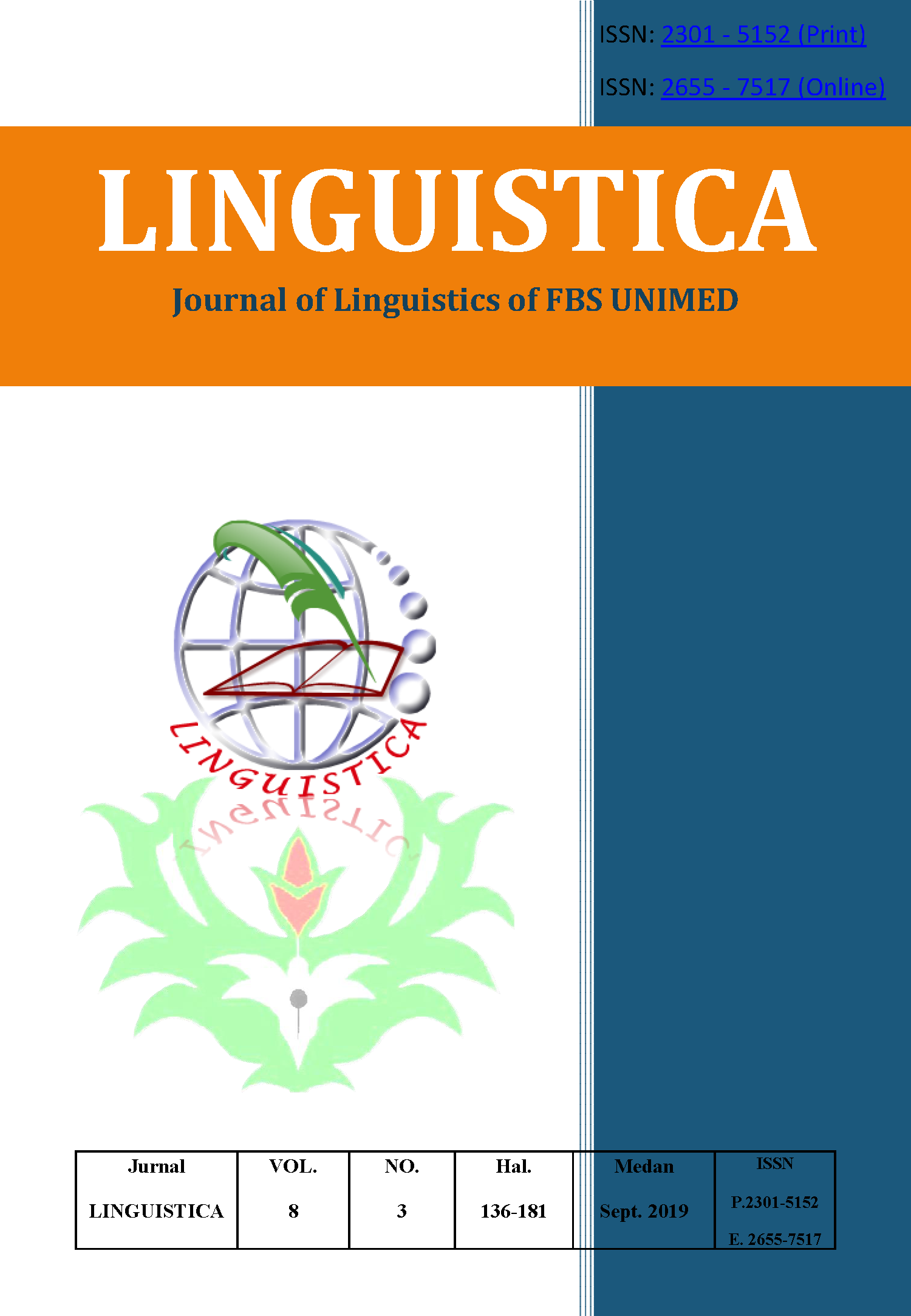ANALYSIS OF TRANSLATION TECHNIQUES IN LORE™S I AM NUMBER FOUR
DOI:
https://doi.org/10.24114/jalu.v8i3.14633Abstract
This final project is a study which analyzes translation techniques used in the translation of novel I am Number Four by Pittacus Lore. The translation techniques introduced by Molina and Albir (2002) is the theory I use in this study. The object of the study is to explain the techniques used by the translator in translating I am Number Four. This research is classified into descriptive research. It is the study in which I need to collect and analyze data to get conclusion. However, I also find out that it is essential to combine the qualitative approach with the quantitative one. The data are gained by reading novel, comparing the novel, identifying, classifying, counting, and conclusion. The result of the study shows that there are 12 techniques found in the data. They are, namely, adaptation, amplification, borrowing, calque, discursive creation, established equivalent, generalization, linguistic compression, literal, particularization, reduction, and transposition. The total data are 671 direct speeches of I am Number Four. The total techniques of the data found are 671. The percentage of each techniques are as follows: (1) borrowing occurs 132 times and represents 19.7%, (2) literal occurs 119 times and represents 17.73%, (3) generalization occurs 97 times and represents 14.46%, (4) established equivalent occurs 94 times and represents 14.01%, (5) amplification occurs 76 times and represents 11.3%, (6) particularization occurs 52 times and represents 7.75%, (7) linguistic compression occurs 43 times and represents 6.41%, (8) reduction occurs 35 times and represents 5.22%, (9) transposition occurs 12 times and represents 1.79%, (10) adaptation occurs 5 times and represents 0.74%, (11) calque occurs 3 data and represents 0.45%, (12) discursive creation occurs 3 times and represents 0.45%. Finally, the conclusions above lead me to provide the following suggestions. First, for translator: it is important to explore different translation techniques to make the translated text clear and try to give an explanation such as footnote in the novel in order to make the reader understand the text. Second, for further researcher: A further research can give knowledge that can be beneficial for the readers and can be the next related research to be reviewed. A further study is also needed to follow the development of the translation study.Keywords: translation technique, novel, I am Number Four, descriptive qualitativeDownloads
Published
2019-09-22
How to Cite
Nasution, D. S., Sinaga, L. S., & Siregar, M. (2019). ANALYSIS OF TRANSLATION TECHNIQUES IN LORE™S I AM NUMBER FOUR. LINGUISTICA, 8(3), 171–175. https://doi.org/10.24114/jalu.v8i3.14633
Issue
Section
Articles
License
Copyright (c) 2019 Dede Syaifuddin Nasution, Lidiman SM Sinaga, Masitowarni Siregar

This work is licensed under a Creative Commons Attribution-ShareAlike 4.0 International License.
Authors who publish with this journal agree to the following terms:
- Authors retain copyright and grant the journal the right of first publication with the work simultaneously licensed under a Creative Commons Attribution License that allows others to share the work with an acknowledgment of the work's authorship and initial publication in this journal.
- Authors are able to enter into separate, additional contractual arrangements for the non-exclusive distribution of the journal's published version of the work (e.g., post it to an institutional repository or publish it in a book), with an acknowledgment of its initial publication in this journal.
- Authors are permitted and encouraged to post their work online (e.g., in institutional repositories or on their website) prior to and during the submission process, as it can lead to productive exchanges, as well as earlier and greater citation of published work (See The Effect of Open Access).
- This work is licensed under a Creative Commons Attribution-ShareAlike 4.0 International License.









